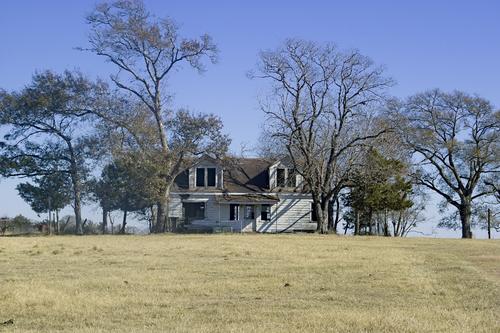They are related, Fourier transform is equivalent to very special case of wavelet processing. Wavelet transforms decompose image into frequency+time components, Fourier transform only into frequency components. Both transforms are reversible.
About getting your night scene using fourier transform.
If you remove low frequencies, then you start from zero frequency, which corresponds to average value of your signal (image) - average of sky and field; removing it makes average value zero (shifts all values). Then removing next low frequency component (we are talking about discrete FT here - in continuous case there is continuous spectrum of frequencies) approximately removes differences between halves of your image (in every direction) - making sky and field same brightness (if you process colors separately, then same color too). Then removing next low frequency component (again approximately) removes difference between image center and border areas and so on.<>



